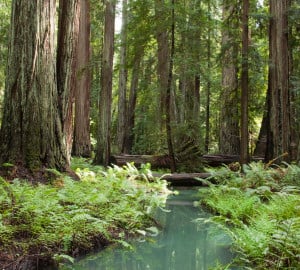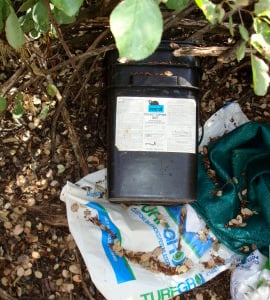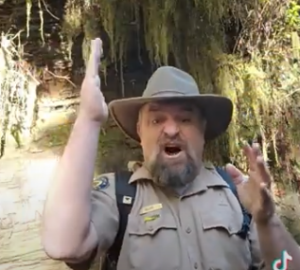
With recreational marijuana legal in Colorado and Washington and medicinal marijuana available in 23 states and the District of Columbia, marijuana is here to stay. And, more of the marijuana on the U.S. market comes from California than any other state.
As we acknowledge this reality, we must also address the environmental impacts of marijuana cultivation: illegal growing operations (“grows”) are poisoning our forests and streams, threatening our access to wilderness, and degrading our environment at a devastating rate.
Recent news reports offer example after example of rampant destruction inflicted by clandestine marijuana operations. These illegal (and therefore, of course, unregulated) practices divert water from streams and rivers, threatening the livelihood of rural communities and killing wildlife, including endangered species like Coho salmon. Illegal cultivation triggers erosion, which strips land of nutrient-rich topsoils, leaves downstream land vulnerable to flooding, and clogs waterways with eroded soil.

The people tending the marijuana crops generate trash themselves, and disperse massive amounts of harmful chemicals that cause huge environmental damage. To protect their plants, marijuana growers use rodenticides, a class of chemicals designed to poison rats and mice. Rodenticides are slow-acting, meaning the rodents accumulate the toxins in their bodies for days after consuming the poison, until they are eventually killed. Because rodenticides do not kill immediately, the toxicity easily spreads through the food chain when predators consume poisoned prey.
In the redwoods region of Northern California, there have been numerous documented cases of rodenticide-caused deaths in Pacific fisher (a candidate for endangered status), Northern spotted owl (listed as threatened), black bear and other species.
For further examples of illegal grows’ troubling impacts, consider these recent events:
- In just the past few weeks, arrests and marijuana seizures have been made in Bonny Doon and Austin Creek State Recreation Area, both home to redwoods, waterways and wildlife.
- Two hundred households on the Yurok Indian Reservation in Humboldt County, who rely on surface water from the Klamath River, may run dry this summer as marijuana growers divert residential water to pot farms.
- Drug-trafficking suspects who tended an illegal marijuana garden in Nevada’s Snake Mountains near the Utah border left a makeshift campground filled with 700 pounds of garbage that damaged an aspen grove. The site also contained water-catching basins and irrigation systems stretching over some six acres of this U.S. wilderness rangeland.
League Board member Justin Faggioli and his family own property on forestland in Tulare County, immediately adjacent to Sequoia National Forest and Sequoia National Park. He has discovered illegal grow sites on his property several times. In fact, in the last 12 years, the Tulare County Sheriff and other agencies have conducted 13 busts of operations found on his land and the immediately neighboring National Forest. Of the environmental impact, Justin says, “It’s unbelievable — the industriousness of these individuals is amazing. They hike in thousands of feet of drip hose. They siphon off springs and streams and clear-cut acres of trees and brush in order to plant as many as 12,000 plants per site. In the aftermath they have left hundreds of pounds of herbicides and fertilizers and mountains of trash around their campsites. Then when it rains, it all flows into the streams.”
And, all of this destruction doesn’t even take into account the threat of criminal violence that could ruin our access to and enjoyment of the great outdoors: the gun-wielding people guarding the grow sites endanger tourists, hikers and campers, as well as the public and private stewards of our protected lands.
As the public debate regarding legalizing marijuana continues, our state and federal government representatives and all who care about the redwood forests of California should be aware of the impact of the illegal marijuana growing industry. Failure to address it will unravel years of investment in our parklands, as these illegal grow sites degrade our environment, consume our precious natural resources and kill our wildlife.
We must act now. U.S. Rep. Jared Huffman, D-San Rafael, has urged U.S. Attorney for the Northern District of California Melinda Haag and Washington decision-makers to lend federal support to combating this national threat. Let them know you support allocation of federal funds and manpower to defend our national lands.
As Justin said to me, “Supporting Congressman Huffman’s bill is an important step. Whether or not our society cares about the use of marijuana, hopefully it will care about the environmental damage that results from its production.”
Read my recent editorial in the San Francisco Chronicle for more on this issue, and follow me on Twitter at SamH4Redwoods for updates on marijuana cultivation in the redwoods.








